Search Result
Results for "
extracellular domain
" in MedChemExpress (MCE) Product Catalog:
| Cat. No. |
Product Name |
Target |
Research Areas |
Chemical Structure |
-
- HY-125399
-
|
HBED-CC-PSMA
|
PSMA
|
Cancer
|
|
PSMA-11 is a positron emission tomography (PET) tracer. PSMA-11 detects prostate cancer relapses and metastases by binding to the extracellular domain of prostate-specific membrane antigen (PSMA) .
|
-

-
- HY-18377
-
|
DR5 Activator
|
TNF Receptor
Apoptosis
|
Cancer
|
|
Bioymifi (DR5 Activator), a potent TRAIL receptor DR5 activator, binds to the extracellular domain (ECD) of DR5 with a Kd of 1.2 μM. Bioymifi can act as a single agent to induce DR5 clustering and aggregation, leading to apoptosis .
|
-
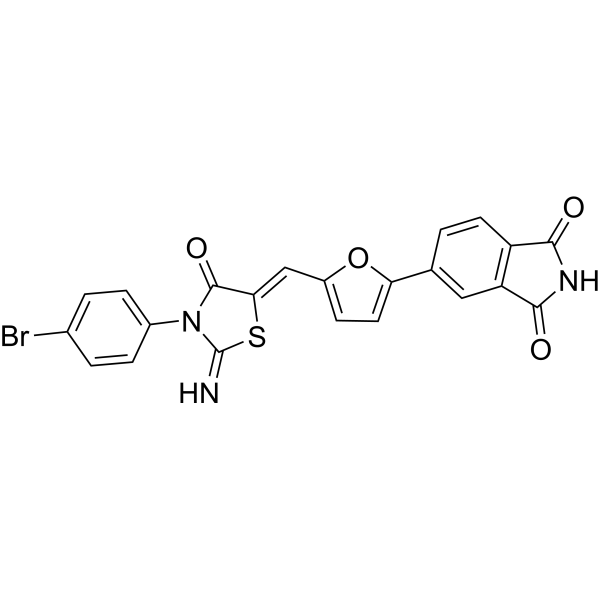
-
- HY-P1985A
-
|
|
Notch
|
Cardiovascular Disease
Cancer
|
|
Notch 1 TFA (Notch homolog 1, translocation-associated) can encode a member of the NOTCH family of proteins. Members of this Type I transmembrane protein family share structural characteristics including an extracellular domain consisting of multiple epidermal growth factor-like (EGF) repeats, and an intracellular domain consisting of multiple different domain types .
|
-

-
- HY-P99507
-
|
MCLA-128; PB4188; R040517
|
EGFR
|
Cancer
|
|
Zenocutuzumab (MCLA-128) is a bispecific humanized IgG1 antibody containing two different Fab arms, targeting extracellular domains of HER2 and HER3 .
|
-

-
- HY-150047
-
|
|
Apoptosis
|
Cancer
|
|
BK60106 is a CD99 inhibitor that directly binds to the extracellular domain of CD99. BK60106 selectively kill Ewing sarcoma (ES) cells. BK60106 induces apoptosis in ES cells with less DNA damage .
|
-
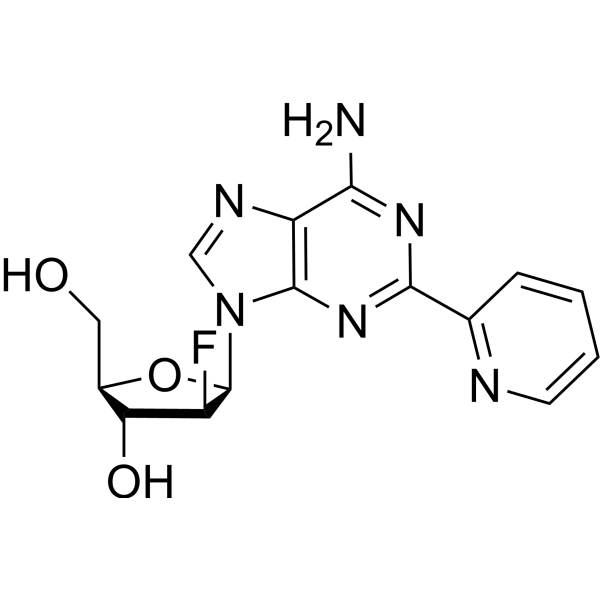
-
- HY-101084
-
NSC 228155
Maximum Cited Publications
7 Publications Verification
|
EGFR
Histone Acetyltransferase
Epigenetic Reader Domain
|
Cancer
|
|
NSC 228155 is an activator of EGFR, binds to the extracellular region of EGFR and enhance tyrosine phosphorylation of EGFR . NSC 228155 is also a potent inhibitor of KIX-KID interaction, inhibits kinase-inducible domain (KID) from CREB and KID-interacting domain (KIX) from CBP, with an IC50 of 0.36 μM .
|
-
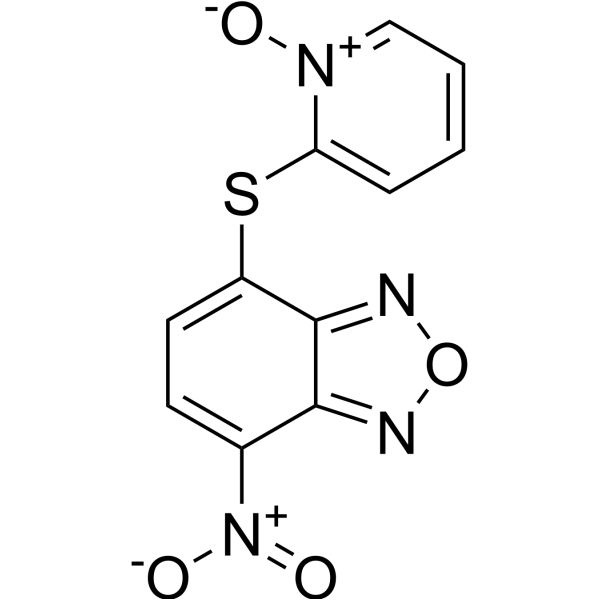
-
- HY-108829
-
|
CTLA4lg; BMS-188667
|
CTLA-4
|
Inflammation/Immunology
Cancer
|
|
Abatacept (CTLA4lg) is a soluble fusion protein consisting of the extra-cellular domain of human CTLA4 and a fragment of the Fc portion of human IgG1 (hinge and CH2 and 3 domains) . Abatacept is a selective T-cell co-stimulation modulator and a protein agent for the autoimmune diseases .
|
-
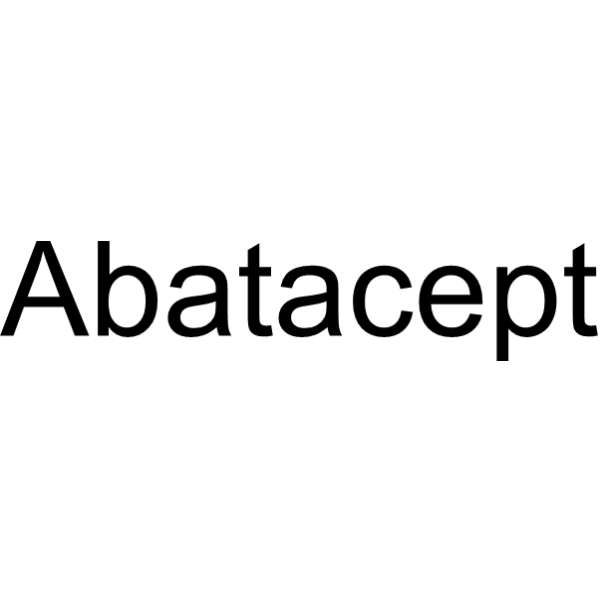
-
- HY-108829A
-
|
CTLA4lg (powder); BMS-188667 (powder)
|
CTLA-4
|
Inflammation/Immunology
Cancer
|
|
Abatacept (CTLA4lg; BMS-188667) powder is a soluble fusion protein consisting of the extra-cellular domain of human CTLA4 and a fragment of the Fc portion of human IgG1 (hinge and CH2 and 3 domains). Abatacept powder is a selective T-cell co-stimulation modulator and a protein agent for the autoimmune diseases .
|
-

-
- HY-P99962
-
|
BGB-A425
|
Mucin
|
Cancer
|
|
Surzebiclimab (BGB-A425) is a humanized IgG1-variant monoclonal antibody against T-cell immunoglobulin and mucin-domain containing-3 (TIM-3). Surzebiclimab binds to the extracellular domain of human Tim-3 with high affinity (KD=0.36 nM) and specificity. Surzebiclimab can be used in research of cancer .
|
-

-
- HY-P990017
-
|
CD19-4-1BBL; RO7227166; RG6076
|
CD19
|
Cancer
|
|
Englumafusp alfa (CD19-4-1BBL; RO7227166) is a fusion construct comprised of a CD19-specific antibody domain fused to a trimerized extracellular domains of human 41BBL. Englumafusp alfa promotes CD19-specific 4-1BB cross-linking on the surface of T and NK cells .
|
-

-
- HY-P99480
-
|
M7824; MSB0011359C
|
TGF-β Receptor
|
Cancer
|
|
Bintrafusp alfa (M 7824) is a first-in-class bifunctional fusion protein composed of the extracellular domain of TGF-βRII fused to a human IgG1 mAb blocking programmed cell death ligand. Bintrafusp alfa can be used for the research of cancer .
|
-

-
- HY-108822
-
|
Arcalyst; IL 1 Trap; Interleukin 1 Trap
|
Interleukin Related
|
Inflammation/Immunology
|
|
Rilonacept (Arcalyst), a dimeric fusion protein, is a interleukin 1 inhibitor. Rilonacept consists of the ligand-binding domains of the extracellular portions of the IL-1R components linked to the Fc portion of human IgG1. Rilonacept can be used for the research of cryopyrin-associated periodic syndromes .
|
-
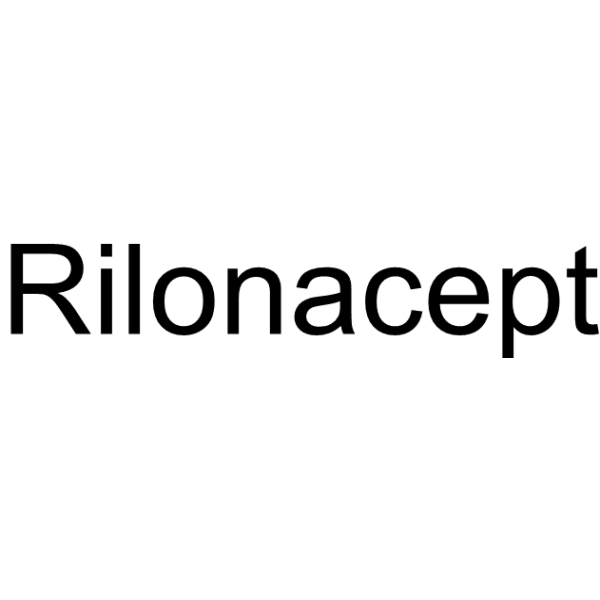
-
- HY-P99205
-
|
|
ADC Antibody
|
Cancer
|
|
Glembatumumab is a fully human IgG2 monoclonal antibody directed against the extracellular structural domain of GPNMB expressed in human breast cancer and melanoma. Glembatumumab can be coupled to the microtubule inhibitor monomethyl auristatin E to form glembatumumab vedotin. Glembatumumab vedotin is an antibody-agent coupling (ADC) with antitumor activity .
|
-

-
- HY-P9920
-
|
|
VEGFR
|
Cancer
|
|
Ramucirumab is a human VEGFR-2 antagonist for the treatment of solid tumors. Ramucirumab is a recombinant human immunoglobulin G1 monoclonal antibody that binds to the extracellular binding domain of VEGFR-2 and prevents the binding of VEGFR ligands: VEGF-A, VEGF-C, and VEGF-D. Ramucirumab is also an angiogenesis inhibitor .
|
-

-
- HY-12283
-
|
PST 2238
|
Na+/K+ ATPase
RSV
|
Cardiovascular Disease
|
|
Rostafuroxin (PST 2238), a digitoxigenin derivative, is an orally active and potent Na +,K +-ATPase (ATP1A1) antognist. Rostafuroxin binds specifically to the ATP1A1 extracellular domain and blocks respiratory syncytial virus (RSV)-triggered EGFR Tyr845 phosphorylation. Rostafuroxin has antihypertensive and anti-RSV activity .
|
-
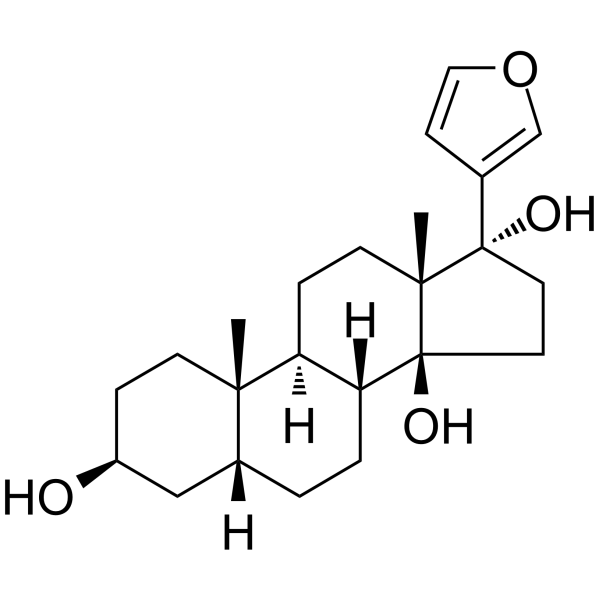
-
- HY-P9968
-
|
|
EGFR
|
Cancer
|
|
Nimotuzumab is a humanized IgG1 monoclonal antibody targeting EGFR with a KD of 0.21 nM. Nimotuzumab is directed against the extracellular domain of the EGFR blocking the binding to its ligands. Nimotuzumab, a strong antitumor agent, is cytolytic on target tumors by its capacity to cause antibody dependent cell mediated cytotoxicity (ADCC) and complement dependent cytotoxicity (CDC) .
|
-

-
- HY-P99601
-
|
BFCR 4350A; RG 6160; RO 7187797
|
CD3
|
Neurological Disease
Cancer
|
|
Cevostamab (BFCR4350A; RG6160; RO7187797) is a humanized IgG1-based BsAb that targets membrane-proximal extracellular domain of FcRH5 on multiple myeloma (MM) cells as well as CD3 on T cells. Moreover, Cevostamab facilitates efficient synapse formation, improves killing activity of T cells against MM tumor cells .
|
-

-
- HY-P9920A
-
|
|
VEGFR
|
Cancer
|
|
Ramucirumab (anti-VEGFR) is a human VEGFR-2 antagonist for the treatment of solid tumors. Ramucirumab (anti-VEGFR) is a recombinant human immunoglobulin G1 monoclonal antibody that binds to the extracellular binding domain of VEGFR-2 and prevents the binding of VEGFR ligands: VEGF-A, VEGF-C, and VEGF-D. Ramucirumab (anti-VEGFR) is also an angiogenesis inhibitor .
|
-
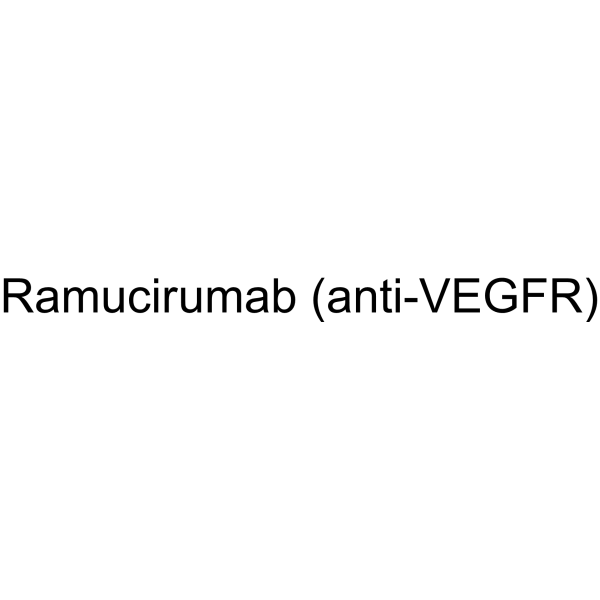
-
- HY-P99252
-
|
Anti-Human CD6 Recombinant Antibody
|
CD6
|
Infection
Inflammation/Immunology
|
|
Itolizumab (Anti-Human CD6 Recombinant Antibody) is a humanized recombinant anti-CD6 monoclonal antibody (MAb) targeting the extracellular SRCR distal domain 1 of CD6. Itolizumab reduces T-cell proliferation and inhibits the production of pro-inflammatory cytokines, such as INF-γ, TNFα and IL-6. Itolizumab can be used in the research of psoriasis, rheumatoid arthritis (RA), COVID-19 .
|
-

-
- HY-P99165
-
|
|
IGF-1R
TSH Receptor
|
Endocrinology
|
|
Teprotumumab is an IGF-1 receptor (IGF-1R) blocking human monoclonal antibody. Teprotumumab binds to the ligand binding extracellular α-subunit domain of IGF-1R. Teprotumumab inhibits TSH and IGF-1 action in fibrocytes. Teprotumumab attenuates TSH-dependent IL-6 and IL-8 expression and Akt phosphorylation. Teprotumumab can be used for thyroid-associated ophthalmopathy research .
|
-
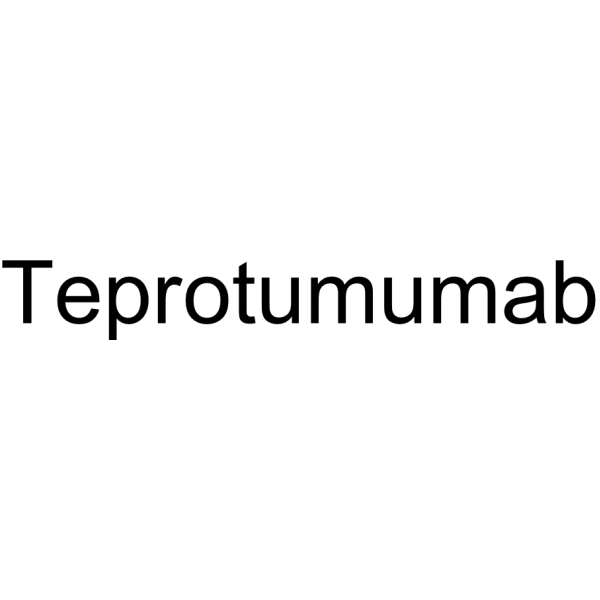
-
- HY-P99437
-
|
KN-026
|
EGFR
|
Cancer
|
|
Anbenitamab (KN-026) is a bispecific antibody simultaneously targeting the extracellular domains II and IV of the human HER2. Anbenitamab blocks both ligand-dependent and ligand-independent HER2 signaling pathway. The IgG1 Fc fragment of Anbenitamab binds FcRγIIIa mediates potent antibody dependent cell-mediated cytotoxicity (ADCC) and inhibits tumor cell proliferation. Anbenitamab has the potential for HER2-positive metastatic breast cancer (MBC) research .
|
-

-
- HY-P990088
-
|
|
VEGFR
PD-1/PD-L1
|
Cardiovascular Disease
|
|
Sotiburafusp alfa is a bispecific fusion protein, which is a humanized VEGFR-1 extracellular domain fragment (129-228, 1-100 in the current sequence) fused via the peptide linker 101GGSGGSGGSGGSGGS 115 to the N-terminus of the heavy chain (116-564) of a humanized IgG1-kappa anti-human PD-L1 heavy chain variant L352>A, L353>A. Sotiburafusp alfa is also an angiogenesis inhibitor .
|
-

-
- HY-P99463
-
|
AVB-S6-500
|
TAM Receptor
|
Cancer
|
|
Batiraxcept (AVB-S6-500) is a highly potent and specific AXL inhibitor, a recombinant fusion protein dimer containing the extracellular domain of human AXLM and human immunoglobulin G1 heavy chain (Fc). Batiraxcept binds to GAS6 and inhibits the interaction of GAS6 with AXL, thereby substantially reducing AXL signaled invasion and migration of highly metastatic cells in vitro and inhibiting metastatic disease in nonclinical models of aggressive human cancers. Batiraxcept is available for studies in advanced or metastatic clear cell renal cell carcinoma (ccRCC) and platinum sensitive recurrent ovarian cancer .
|
-

-
- HY-139534
-
|
|
ROR
Apoptosis
|
Cancer
|
|
ARI-1 is an inhibitor of receptor tyrosine kinase-like orphan receptor 1 (ROR1) inhibitor. ARI-1 effectively inhibits aberrant ROR1 expression, which is associated with the development of non-small cell lung cancer (NSCLC) and EGFR-TKI-induced drug resistance. ARI-1 binds to the extracellular Frizzled domain of ROR1 and regulates PI3K/AKT/mTOR signaling in a ROR1-dependent manner. ARI-1 potently inhibits NSCLC cell proliferation and migration and has antitumor activity in vivo [1] .
|
-

| Cat. No. |
Product Name |
Target |
Research Area |
-
- HY-P5421
-
|
|
Peptides
|
Others
|
|
Caloxin 1B1 is a biological active peptide. (Caloxin 1b1 is obtained by screening for binding to extracellular domain 1 of PMCA4, which inhibited PMCA extracellularly, selectively, and had a higher affinity for PMCA4 than PMCA1. Because caloxin 1b1 had been selected to bind to an extracellular domain of PMCA, it could be added directly to cells and tissues to examine its effects on smooth muscle and endothelium.)
|
-
- HY-P5389
-
|
|
Peptides
|
Others
|
|
Connexin mimetic peptide 40GAP27 is a biological active peptide. (This peptide corresponds to the GAP27 domain of the second extracellular loop of dominant vascular connexin (Cx40), designated as 40Gap 27. It was used to investigate mechanisms through which oxidant stress impairs communication via gap junctions. When administered, 40Gap27attenuates endothelium-dependent subintimal smooth muscle hyperpolarization.)
|
-
- HY-P5472
-
|
|
Peptides
|
Others
|
|
Tumour-associated MUC1 epitope is a biological active peptide. (This sequence is the hallmark of MUC1 mucin. MUC1 is a highly glycosylated type I transmembrane glycoprotein with a unique extracellular domain consisting of a variable number of tandem repeats (VNTR) of this 20 amino acid peptide. It is overexpressed on the cell surface of many human adenocarcinomas and hematological malignancies, including multiple myeloma and B-cell lymphoma, making MUC1 broadly applicable target for immunotherapeutic strategies.)
|
-
- HY-P5387
-
|
|
Peptides
|
Others
|
|
Connexin mimetic peptide 40,37GAP26 is a biological active peptide. (This peptide corresponds to the GAP26 domain of the extracellular loop of the major vascular connexins (Cx37, Cx40), designated as 37, 40Gap 26 according to Cx homology. It was used to investigate the role of gap junctions in the spread of endothelial hyperpolarizations evoked by cyclopiazonic acid (CPA) through the wall of the rodent iliac artery. The gap junction plaques constructed from Cx37 and Cx40 were abundant in the endothelium. This peptide provides inhibitory effects against subintimal hyperpolarization.)
|
| Cat. No. |
Product Name |
Target |
Research Area |
-
- HY-P99507
-
|
MCLA-128; PB4188; R040517
|
EGFR
|
Cancer
|
|
Zenocutuzumab (MCLA-128) is a bispecific humanized IgG1 antibody containing two different Fab arms, targeting extracellular domains of HER2 and HER3 .
|
-
- HY-108829
-
|
CTLA4lg; BMS-188667
|
CTLA-4
|
Inflammation/Immunology
Cancer
|
|
Abatacept (CTLA4lg) is a soluble fusion protein consisting of the extra-cellular domain of human CTLA4 and a fragment of the Fc portion of human IgG1 (hinge and CH2 and 3 domains) . Abatacept is a selective T-cell co-stimulation modulator and a protein agent for the autoimmune diseases .
|
-
- HY-P99962
-
|
BGB-A425
|
Mucin
|
Cancer
|
|
Surzebiclimab (BGB-A425) is a humanized IgG1-variant monoclonal antibody against T-cell immunoglobulin and mucin-domain containing-3 (TIM-3). Surzebiclimab binds to the extracellular domain of human Tim-3 with high affinity (KD=0.36 nM) and specificity. Surzebiclimab can be used in research of cancer .
|
-
- HY-108829A
-
|
CTLA4lg (powder); BMS-188667 (powder)
|
CTLA-4
|
Inflammation/Immunology
Cancer
|
|
Abatacept (CTLA4lg; BMS-188667) powder is a soluble fusion protein consisting of the extra-cellular domain of human CTLA4 and a fragment of the Fc portion of human IgG1 (hinge and CH2 and 3 domains). Abatacept powder is a selective T-cell co-stimulation modulator and a protein agent for the autoimmune diseases .
|
-
- HY-P990017
-
|
CD19-4-1BBL; RO7227166; RG6076
|
CD19
|
Cancer
|
|
Englumafusp alfa (CD19-4-1BBL; RO7227166) is a fusion construct comprised of a CD19-specific antibody domain fused to a trimerized extracellular domains of human 41BBL. Englumafusp alfa promotes CD19-specific 4-1BB cross-linking on the surface of T and NK cells .
|
-
- HY-P99480
-
|
M7824; MSB0011359C
|
TGF-β Receptor
|
Cancer
|
|
Bintrafusp alfa (M 7824) is a first-in-class bifunctional fusion protein composed of the extracellular domain of TGF-βRII fused to a human IgG1 mAb blocking programmed cell death ligand. Bintrafusp alfa can be used for the research of cancer .
|
-
- HY-108822
-
|
Arcalyst; IL 1 Trap; Interleukin 1 Trap
|
Interleukin Related
|
Inflammation/Immunology
|
|
Rilonacept (Arcalyst), a dimeric fusion protein, is a interleukin 1 inhibitor. Rilonacept consists of the ligand-binding domains of the extracellular portions of the IL-1R components linked to the Fc portion of human IgG1. Rilonacept can be used for the research of cryopyrin-associated periodic syndromes .
|
-
- HY-P99763
-
|
BGB-A1217
|
Inhibitory Antibodies
|
Cancer
|
|
Ociperlimab is a humanized IgG1 anti-TIGIT antibody. Ociperlimab binds to the extracellular domain of human TIGIT with high affinity (KD = 0.135 nM). Ociperlimab blocks the interaction between TIGIT and its ligands PVR or PVR-L2. Ociperlimab can be used in research of cancer .
|
-
- HY-P99205
-
|
|
ADC Antibody
|
Cancer
|
|
Glembatumumab is a fully human IgG2 monoclonal antibody directed against the extracellular structural domain of GPNMB expressed in human breast cancer and melanoma. Glembatumumab can be coupled to the microtubule inhibitor monomethyl auristatin E to form glembatumumab vedotin. Glembatumumab vedotin is an antibody-agent coupling (ADC) with antitumor activity .
|
-
- HY-P9920
-
|
|
VEGFR
|
Cancer
|
|
Ramucirumab is a human VEGFR-2 antagonist for the treatment of solid tumors. Ramucirumab is a recombinant human immunoglobulin G1 monoclonal antibody that binds to the extracellular binding domain of VEGFR-2 and prevents the binding of VEGFR ligands: VEGF-A, VEGF-C, and VEGF-D. Ramucirumab is also an angiogenesis inhibitor .
|
-
- HY-P9968
-
|
|
EGFR
|
Cancer
|
|
Nimotuzumab is a humanized IgG1 monoclonal antibody targeting EGFR with a KD of 0.21 nM. Nimotuzumab is directed against the extracellular domain of the EGFR blocking the binding to its ligands. Nimotuzumab, a strong antitumor agent, is cytolytic on target tumors by its capacity to cause antibody dependent cell mediated cytotoxicity (ADCC) and complement dependent cytotoxicity (CDC) .
|
-
- HY-P99601
-
|
BFCR 4350A; RG 6160; RO 7187797
|
CD3
|
Neurological Disease
Cancer
|
|
Cevostamab (BFCR4350A; RG6160; RO7187797) is a humanized IgG1-based BsAb that targets membrane-proximal extracellular domain of FcRH5 on multiple myeloma (MM) cells as well as CD3 on T cells. Moreover, Cevostamab facilitates efficient synapse formation, improves killing activity of T cells against MM tumor cells .
|
-
- HY-P9920A
-
|
|
VEGFR
|
Cancer
|
|
Ramucirumab (anti-VEGFR) is a human VEGFR-2 antagonist for the treatment of solid tumors. Ramucirumab (anti-VEGFR) is a recombinant human immunoglobulin G1 monoclonal antibody that binds to the extracellular binding domain of VEGFR-2 and prevents the binding of VEGFR ligands: VEGF-A, VEGF-C, and VEGF-D. Ramucirumab (anti-VEGFR) is also an angiogenesis inhibitor .
|
-
- HY-P99252
-
|
Anti-Human CD6 Recombinant Antibody
|
CD6
|
Infection
Inflammation/Immunology
|
|
Itolizumab (Anti-Human CD6 Recombinant Antibody) is a humanized recombinant anti-CD6 monoclonal antibody (MAb) targeting the extracellular SRCR distal domain 1 of CD6. Itolizumab reduces T-cell proliferation and inhibits the production of pro-inflammatory cytokines, such as INF-γ, TNFα and IL-6. Itolizumab can be used in the research of psoriasis, rheumatoid arthritis (RA), COVID-19 .
|
-
- HY-P99165
-
|
|
IGF-1R
TSH Receptor
|
Endocrinology
|
|
Teprotumumab is an IGF-1 receptor (IGF-1R) blocking human monoclonal antibody. Teprotumumab binds to the ligand binding extracellular α-subunit domain of IGF-1R. Teprotumumab inhibits TSH and IGF-1 action in fibrocytes. Teprotumumab attenuates TSH-dependent IL-6 and IL-8 expression and Akt phosphorylation. Teprotumumab can be used for thyroid-associated ophthalmopathy research .
|
-
- HY-P99437
-
|
KN-026
|
EGFR
|
Cancer
|
|
Anbenitamab (KN-026) is a bispecific antibody simultaneously targeting the extracellular domains II and IV of the human HER2. Anbenitamab blocks both ligand-dependent and ligand-independent HER2 signaling pathway. The IgG1 Fc fragment of Anbenitamab binds FcRγIIIa mediates potent antibody dependent cell-mediated cytotoxicity (ADCC) and inhibits tumor cell proliferation. Anbenitamab has the potential for HER2-positive metastatic breast cancer (MBC) research .
|
-
- HY-P990088
-
|
|
VEGFR
PD-1/PD-L1
|
Cardiovascular Disease
|
|
Sotiburafusp alfa is a bispecific fusion protein, which is a humanized VEGFR-1 extracellular domain fragment (129-228, 1-100 in the current sequence) fused via the peptide linker 101GGSGGSGGSGGSGGS 115 to the N-terminus of the heavy chain (116-564) of a humanized IgG1-kappa anti-human PD-L1 heavy chain variant L352>A, L353>A. Sotiburafusp alfa is also an angiogenesis inhibitor .
|
-
- HY-P99463
-
|
AVB-S6-500
|
TAM Receptor
|
Cancer
|
|
Batiraxcept (AVB-S6-500) is a highly potent and specific AXL inhibitor, a recombinant fusion protein dimer containing the extracellular domain of human AXLM and human immunoglobulin G1 heavy chain (Fc). Batiraxcept binds to GAS6 and inhibits the interaction of GAS6 with AXL, thereby substantially reducing AXL signaled invasion and migration of highly metastatic cells in vitro and inhibiting metastatic disease in nonclinical models of aggressive human cancers. Batiraxcept is available for studies in advanced or metastatic clear cell renal cell carcinoma (ccRCC) and platinum sensitive recurrent ovarian cancer .
|
| Cat. No. |
Compare |
Product Name |
Species |
Source |
Compare Products
|
| Products |
|
| Cat. No. |
|
| Species |
|
| Source |
|
| Tag |
|
| Accession |
|
| Gene ID |
|
| Molecular Weight |
|
| Purity |
|
| Endotoxin Level |
|
| Biological Activity |
|
| Appearance |
|
| Formulation |
|
| Storage & Stability |
|
| Shipping |
|
| Free Sample |
Yes
No
|
| Size |
* This product has been "discontinued".
Optimized version of product available:
|
Your information is safe with us. * Required Fields.
Inquiry Information
- Product Name:
- Cat. No.:
- Quantity:
- MCE Japan Authorized Agent:
































